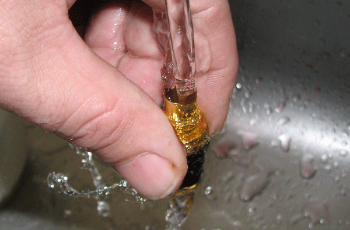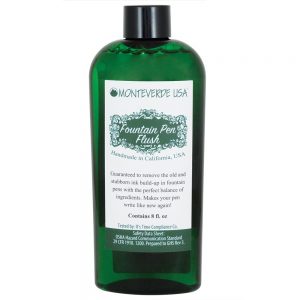| Eventually, when you collect pens that you use you will need to know how to clean a fountain pen or two because you need to change ink colors, let the ink dry inside so much it will not write correctly, or you purchase a pen with dried ink inside. Pen cleaning isn’t hard and only takes a few minutes as long as you don’t let things sit too long.
There are lots of ways to do fountain pen cleaning the method I will show you is the one I use that has worked extremely well for me over the years. Most pens made today are cartridge and/or converter pens. This pen cleaning method works well with other types of pens too. The first step is to disassemble the pen-like so: 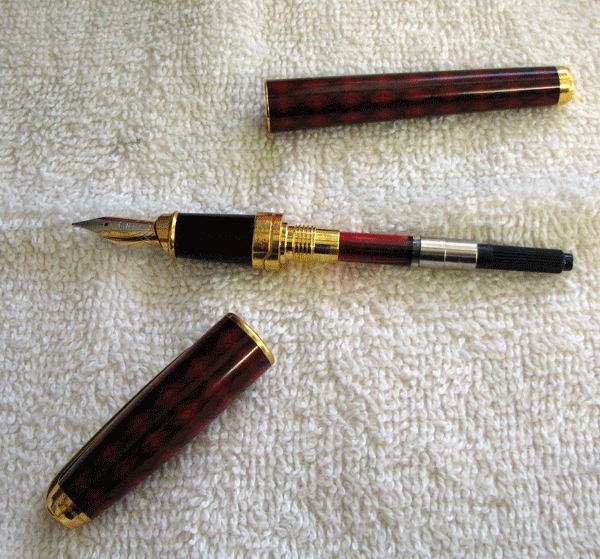 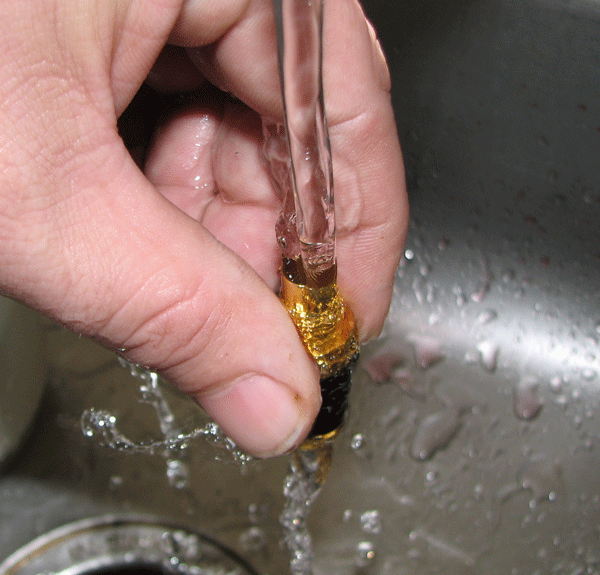 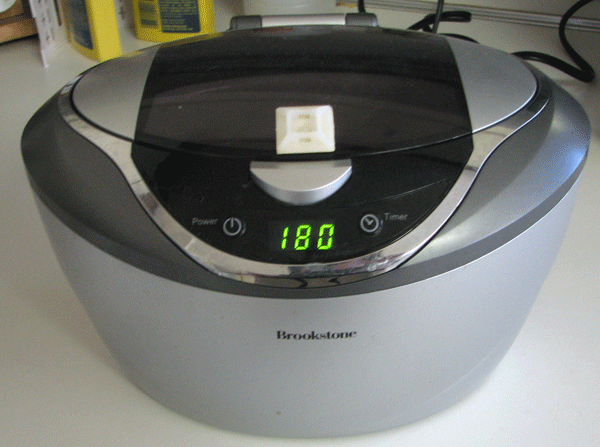 Fill the cup up enough to cover the nib section and converter (this is how to clean fountain pen converters if you have one) still disassembled, I like to use purified/distilled water, and for stubborn pens I will put a drop or two of ammonia (clear, not the lemon or pine-scented, ammonia is excellent for pen cleaning) in the cup. Never use ammonia full strength, and never on chrome parts, it can pit chrome. That setup should look like this: 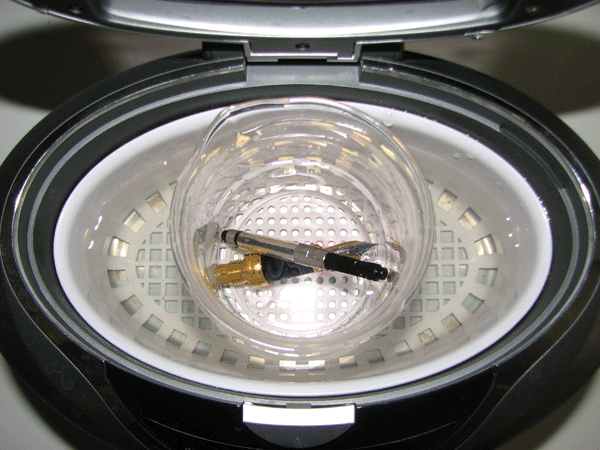 Fill up your pen and give it a try! I do all my own pen cleaning and almost all my own pen maintenance for a wide variety of pens. This same method works with other filling systems as well although you need a way to suspend the pen in the liquid without the nib tip touching anything as you do not want to submerge lever, crescent, button, or piston fillers as the water will get into places where it should not go.
Now let’s assume this did not fully clean the pen, so now it is time to try an added step of a professional pen flush, Monteverde’s Fountain Pen Flush is an excellent choice and one of the first fountain pen supplies I suggest newcomers purchase. This product has cleaned pens that I thought were permanently destroyed and improved the writing of pens I thought were already clean. Although at less than $20 a bottle, I still prefer using only clean water to clean my pen unless that process does not work as well as it should. To use Monteverde’s Fountain Pen Flush I pour a little of the flush into one of my 100ml or 250ml pyrex beakers, enough to submerge the nib completely and then a little more. I dip the nib into the solution and draw some into the converter (or piston, or whatever) and then expel it back into the beaker. I repeat this process until I feel the pen is clean and then flush it out well with purified/distilled water. If the pen will not move the fluid through the nib, I remove the converter and fill it directly with the fluid and then attach the converter back on the pen and expel it through the nib. Should I not be able to do that, I leave it in the pen overnight and try again in the morning. Sometimes I even leave the nib submerged in the fluid if the clog is bad enough in addition to having the converter or ink chamber filled. Once I am done I dispose of the fluid and do not put it back in the bottle. Occasionally when I do not think there was much ink in the pen so the cleaning fluid might not be too contaminated I store it in a different container to use on another pen that might need just a little cleaning, or might be so bad I expect to refill my beaker with solution several times. More warnings! Be very careful trying to clean a fountain pen, or any pen, made of Casein, be careful with hard rubber, never add chemicals like ammonia with pens made of anything other than plastic or metal, never submerge parts that you do not have to (caps etc) unless you have tried your pen cleaning methods with junkers first to see what will happen. Never clean fountain pen with alcohol as it dries out plastic and rubber seals. Good luck! If you can not get your pen working by cleaning, or somehow can not get it to work after cleaning, you may need professional pen maintenance. |
Now you know how to clean a fountain pen! |
